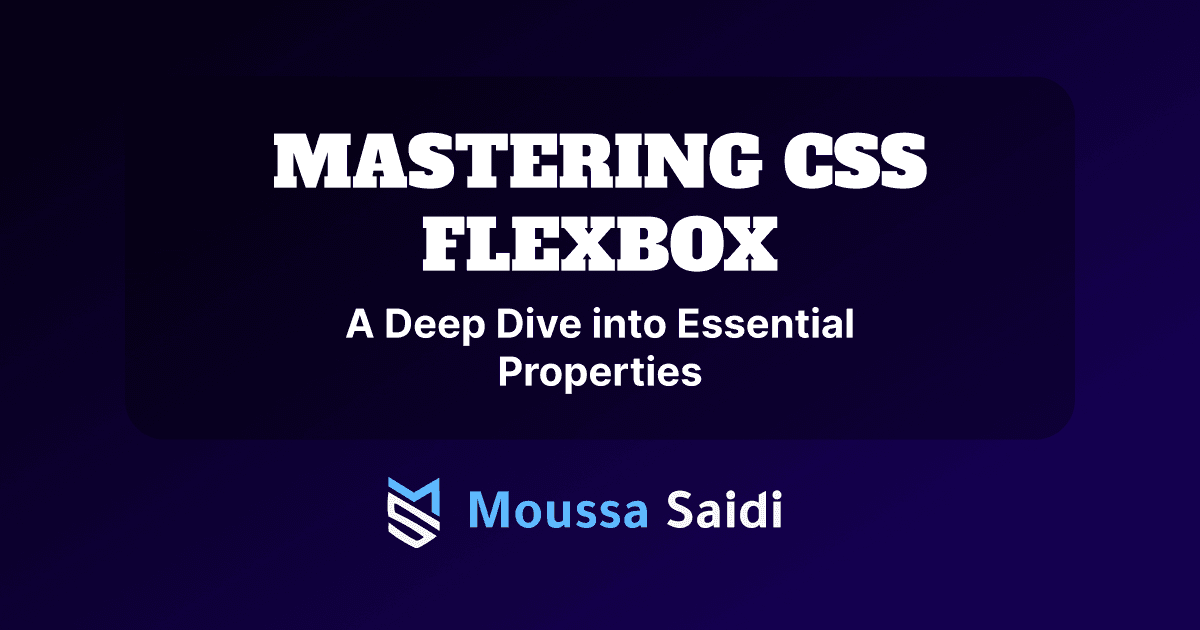
5 CSS PRO TIPS
Boost your web design skills with these 5 CSS pro tips! Learn expert techniques to create cleaner, and more efficient styles for your projects.

CSS Flexbox is a powerful layout module that allows you to create dynamic, responsive designs with ease. With Flexbox, you can structure elements in a flexible container, making alignment and distribution of space much simpler. Let’s dive into the core properties of Flexbox, both for containers and individual items, to help you harness its full potential.
To start using Flexbox, set the container’s display to flex. This transforms the container, allowing it to house "flex items" that can be arranged and aligned in a flexible layout.
.container {
display: flex;
}Within this container, you can add items that will respond to the container’s properties, adjusting their layout based on your settings.
Let’s explore the key properties you can apply to the Flex container for various layout possibilities.
The flex-direction property determines the main axis direction for the container’s items. You can choose:
row (default): Items are placed in a row, left to right.
row-reverse: Items are placed in a row, right to left.
column: Items are placed in a column, top to bottom.
column-reverse: Items are placed in a column, bottom to top.
Example:
.container {
flex-direction: row;
}This property controls whether items should wrap within the container:
nowrap (default): Items stay in one line and may overflow the container.
wrap: Items wrap to the next line if there isn’t enough space.
wrap-reverse: Items wrap in reverse order.
Example:
.container {
flex-wrap: wrap;
}This property aligns items along the main axis:
flex-start (default): Items are aligned to the start of the container.
center: Items are centered.
space-between: Distributes space between items, with no space at the start or end of the container.
space-around: Adds equal space around each item, leaving half-sized spaces on the edges of the container.
space-evenly: Distributes equal space between items and also at the start and end of the container.
Example:
.container {
justify-content: center;
}Align items along the cross-axis:
flex-start: Aligns items to the start of the cross-axis.
flex-end: Aligns items to the end of the cross-axis.
center: Centers items along the cross-axis.
baseline: Aligns items based on their text baseline.
stretch: Stretches items to fill the container’s height along the cross-axis.
Example:
.container {
align-items: stretch;
}The gap property sets the spacing between flex items, allowing for cleaner and more organized layouts.
.container {
gap: 10px;
}Once you’ve set up the container, you can apply additional properties to individual flex items.
Control the order of items with order, which overrides the default HTML order. The lower the value, the earlier the item appears in the layout.
.item-2 {
order: 6;
}The flex-grow property defines an item’s ability to grow and take up available space in the container. A higher value means the item will grow more relative to other items.
.item-2 {
flex-grow: 3;
}This property allows individual items to override the align-items setting of the container, providing more control for each item.
.item-2 {
align-self: center;
}Flexbox offers a robust way to build layouts that are both flexible and responsive. By mastering these properties, you can create layouts that are easy to manage and adapt well to various screen sizes. Flexbox takes the hassle out of aligning items and distributing space, making it an essential tool for modern web design. Try incorporating these properties in your next project to see the difference they can make!